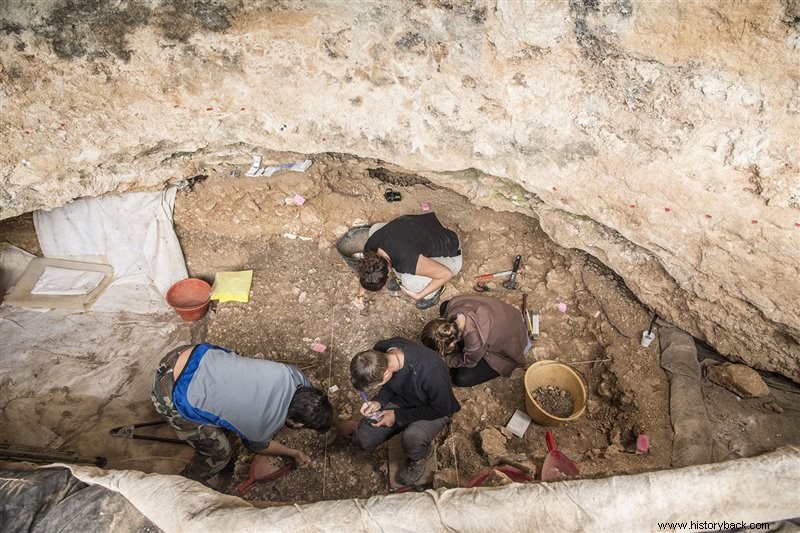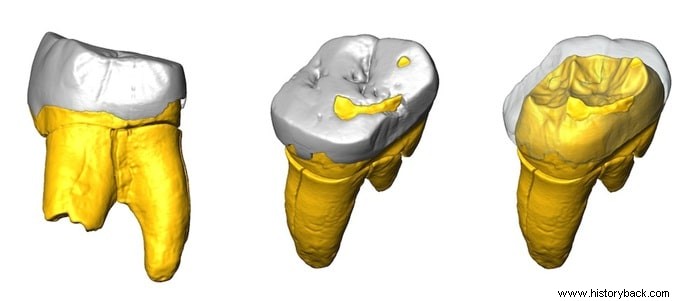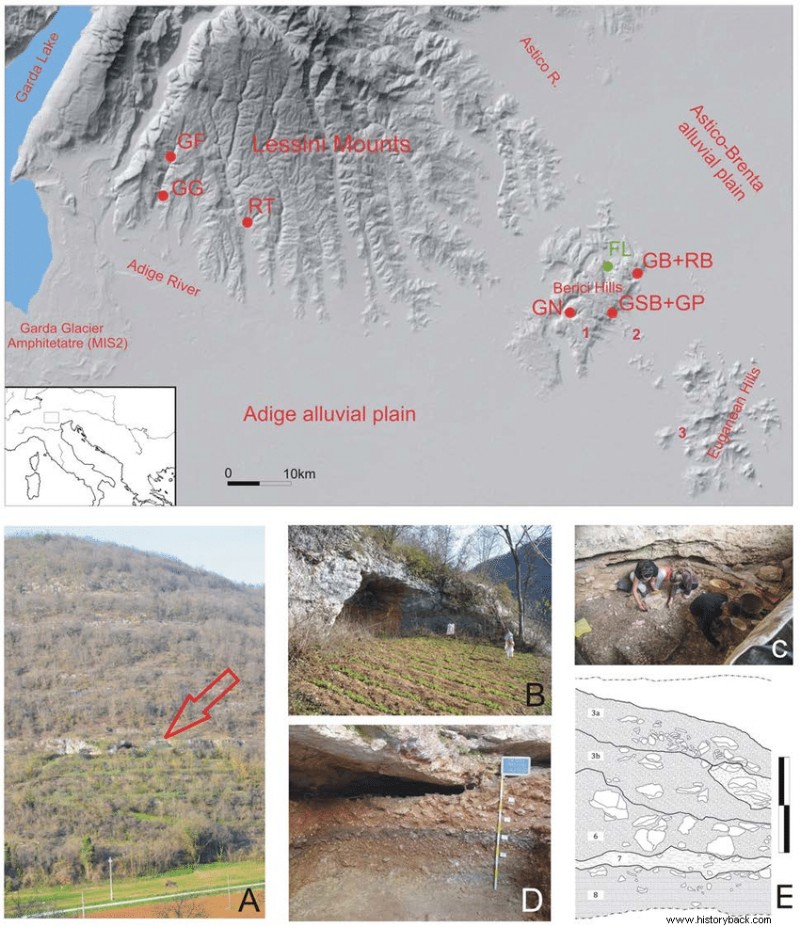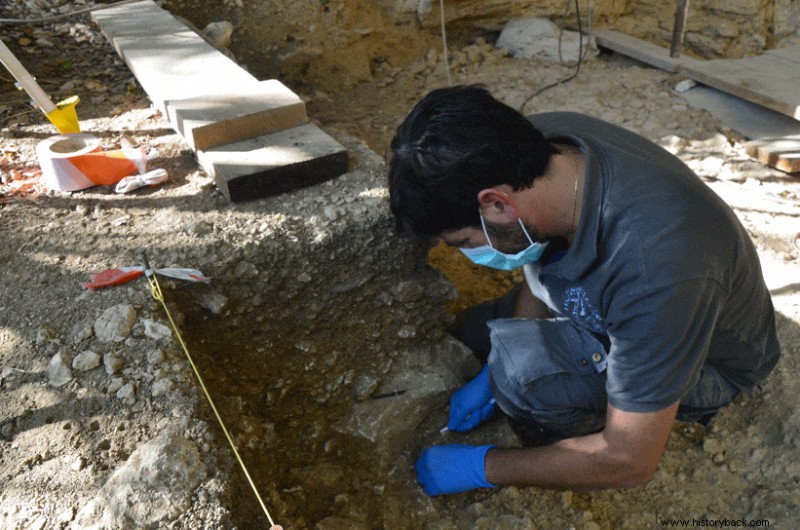“The results of this study show that Neanderthal and Homo sapiens they share a similar energy demand during early childhood and a similar growth rate "
I Neanderthal they began weaning their newborns around the fifth or sixth month of age, a period very similar to what happens for modern man. The discovery comes from the work of an international research group that carried out geochemical and histological analyzes on three milk teeth belonging to Neanderthal children. lived between 70,000 and 45,000 years ago in north-eastern Italy.
The results obtained - published in the journal PNAS - allowed to reconstruct the growth rate and weaning times of Neanderthal newborns. In fact, similar to what happens in trees, the process of tooth growth produces "growth lines" from which it is possible to obtain information through histological analysis techniques.
Combining this information with data on the composition chemistry obtained with mass spectrometry, the researchers were able to establish that the children to whom the analyzed teeth belonged began to eat solid food between five and six months of age.
"The onset of weaning is more related to the physiology of newborns than to cultural factors", says Alessia Nava , of DANTE - Diet and ANcient TEchnology Laboratory to the Department of Odontostomatological Sciences and Maxillo Facials of Wisdom , now researcher Marie Curie of the University of Kent ( United Kingdom ) and co-first author of the study.
"For modern man, in fact, regardless of the type of culture and society, the introduction of solid food into the diet takes place around the sixth month, when the child begins to need a greater energy supply:now they know that the same timing was also valid for Neanderthal ".

“If we make a comparison with other primates - adds Federico Lugli , researcher at the University of Bologna and co-first author of the study - it is very likely that the high level of energy resources required for the growth process of the human brain leads to the need for an early introduction of solid foods into the diet of infants ".
These new information allows to reconstruct important characteristics and behaviors of Neanderthalians . In particular, they allow to exclude that the small number of the Neanderthal population could be linked to longer weaning times than Homo sapiens , an element that would have led to a lower fertility.
"The results of this study show that Neanderthal and Homo sapiens they share a similar energy demand during early childhood and a similar growth rate ", explains Stefano Benazzi , professor of the University of Bologna , among the study coordinators. “These elements suggest that Neanderthal infants they must have had a similar weight to that of our newborns:this would also indicate a similar gestational history, a similar developmental process in the early stages of life and perhaps even a possible interval between pregnancies that was shorter than previously thought ".
The three milk teeth at the center of the study were found in a limited area of north-eastern Italy, between the current provinces of Vicenza and of Verona :at the Shelter of the Broion , in the Cave by Fumane and in the Grotta de Nadale. Together with information on the diet and growth process of children, the analysis of the findings also allowed us to obtain information on the movements of the Neanderthal groups who inhabited that region.

"They moved less than previously assumed", says Wolfgang Müller , professor of Goethe University Frankfurt ( Germany ), among the study coordinators. "The analysis of the strontium isotopes present in the teeth studied indicates that these children spent most of their time in the vicinity of their place of origin:a behavior that denotes a modern mentality, probably linked to a careful use of the resources they had at disposition in that region ”.
"Although there was a general lowering of temperatures in the analyzed period, north-eastern Italy it has almost always remained a region rich in resources, in terms of food, diversity of natural environments and the presence of caves:all elements that help explain the survival of Neanderthals in this area until about 45,000 years ago ”, Says Marco Peresani , professor of the University of Ferrara , one of the study coordinators and responsible for the excavations in the Grotta de Nadale , in that of Fumane and, in sharing with Matteo Romandini researcher at the University of Bologna, to the Shelter of Broion.

Published in PNAS magazine with the title “ Early life of Neanderthals ”, The study was promoted and led by Stefano Benazzi , professor at the Department of Cultural Heritage of the University of Bologna and Principal Investigator of the European research project SUCCESS (ERC Starting Grant No. 724046) , which aims to understand when modern man arrived in southern Europe , the bio-cultural processes that favored its adaptive success and the causes that led to the extinction of the Neanderthal .

Scholars from the University of Bologna participated , of the University of Kent ( United Kingdom ), of the Goethe University Frankfurt ( Germany ), of the University of Ferrara , of the University of Modena and Reggio Emilia , of the Institute of Environmental Geology and Geoengineering ( IGAG ) - CNR , of the International Center for Theoretical Physics “Abdus Salam” , of the Sapienza University of Rome , of the Natural History Museum of London .
